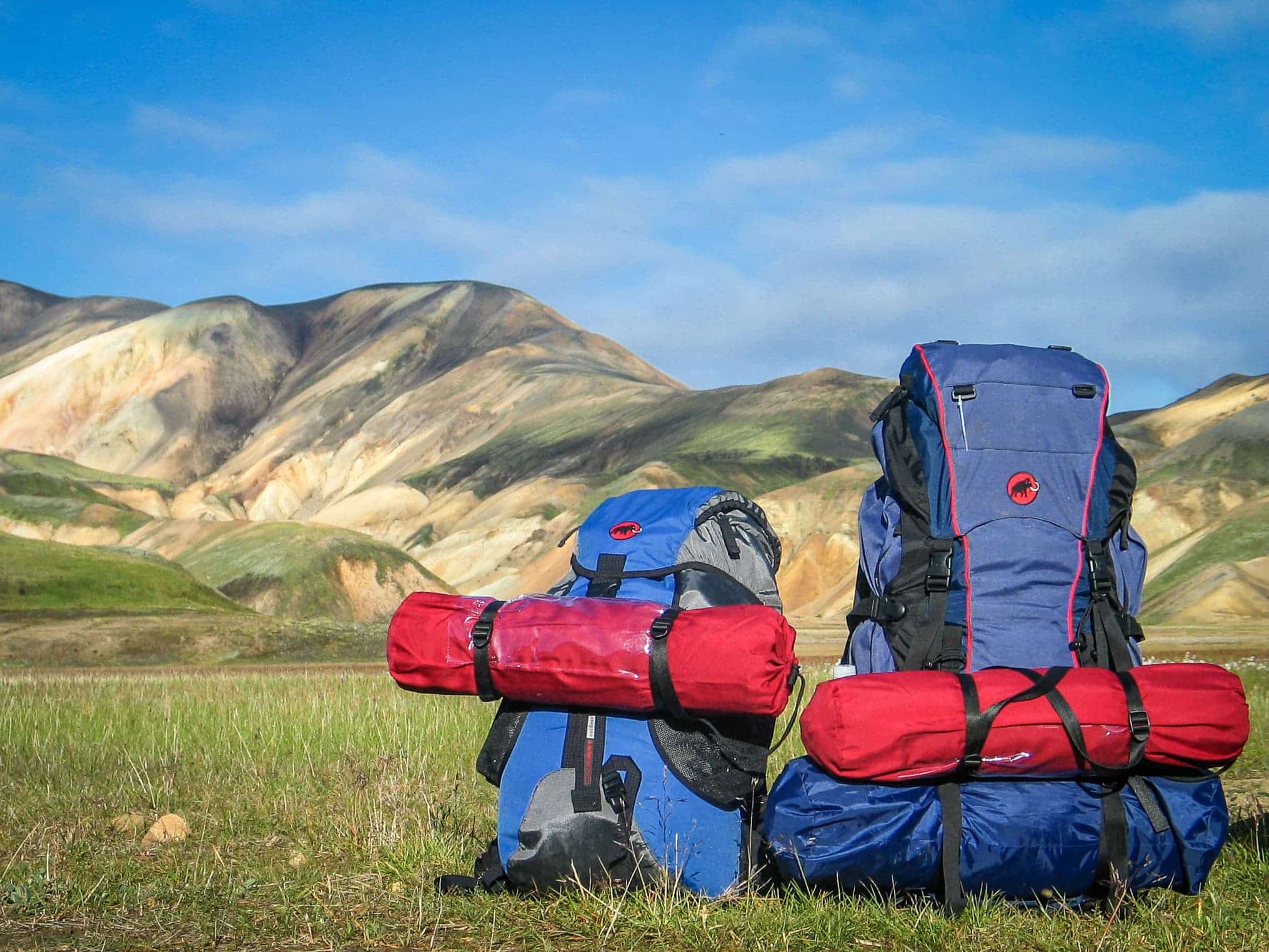Disclosure: This content may contain affiliate links. Read my disclosure policy.
Your backpack is a fundamental and very personal choice. There are so many brands to choose from, each with dozens of models, sizes and configurations to consider. Take a deep breath. Take your time. Do the research.
I started with a small generic pack I picked up in Dick’s for $20. It had a built-in water reservoir and enough space for a few core supplies. Pretty cool, I thought. It worked great for a few early hikes. But very quickly, I found I needed a bigger, better backpack.
Modern backpacks are not your dad’s backpacks. They’re built from great materials, are super light and very tough. They’re also incredibly well-designed. The amount of thought that goes into modern backpacks is really something. When I started out, I was blown away by the attention to detail and sheer functionality of modern backpacks.
Let the Right (Priced) One In
If you’re not in a hurry, wait for a deal.
I picked up my Osprey Stratos 34 from the REI website right as it was going out of stock. It’s an excellent daypack. I got it for a song but even at full price I couldn’t recommend it enough. (This exact model has been discontinued.)
Osprey also have a lifetime repair/replace guarantee. They dominate the hiking backpack market for a reason.
Size Matters
Technical backpacks are categorized by how much volume they provide.
In the above examples: 34 liters and 36 liters. Those volumes are a good size for a daypack. Even fully loaded, I have some space left in Stratos 34, so it’s never jammed full. I can get stuff in and out of my backpack without struggling.
I used the Stratos for my first overnight camping trip in 2019. For that purpose, honestly, it wasn’t quite enough pack. I made it work, but it was less than ideal.
Overnight backpacks come in around 50 liters. That gives you enough extra space for the additional supplies you need: your meals, your camp kit, strapping on your tent or hammock, your sleeping bag, and so on.
I’ve since moved up to a 65 liter pack: the Osprey Atmos AG 65. This is an in-between size: bigger than a standard overnight pack but still smaller than a thru-hiker’s pack.
For multi-day hikes, you’ll need a pack that’s at least 75 liters.
Get access to hyper-detailed trail guides, insider tips, and expert advice. Join a vibrant community of like-minded hikers, receive exclusive content, and embark on unforgettable outdoor adventures. Whether you’re a seasoned outdoor enthusiast or just starting out on your hiking journey, this website provides invaluable resources to help you explore the best trails in the Catskills, Adirondacks, Hudson Highlands, Berkshires, and beyond. Get access now to all content on this website instantly and enjoy unique supporter benefits.
Backpack Fit & Function
You want a backpack that sits well on your hips.
That’s where most of the load will be carried. It should also cinch comfortably to your shoulders with adjustable straps.
Ideally, you want a little air flow around the small of your back, too, for venting sweat.
You want a lot of compartments for segmenting your kit. Think of it this way. You’ll be carrying:
- stuff you need often — snacks and maps
- stuff you need now and again – rain gear, beer, your headlamp
- stuff you rarely need — repair tools, first aid supplies
- stuff you’ll hopefully never need — emergency and overnight kits
The Stratos 34 has one large main compartment. Overlaid on top of that are several smaller compartments where I can separate my food, lighting supplies, map and compass, and so on. At the bottom, also on the outside, there are two more compartments: a small one which holds the rain-cover that comes with the backpack, and a slightly larger one where I keep some emergency supplies.
BTW, you might also enjoy…
- NEW › New York Hike Finder Tool
- CATSKILLS › Escarpment Trail Guide
- STAY › Find Your Perfect Catskills Stay
- ADIRONDACKS › Dix Range from Elk Lake
- ENTERTAINMENT › 15 Best & Worst Hiking Movies
- Follow › My Instagram @TotalCatskills
- Follow › My Substack @TotalCatskills
- Follow › My writing for Times Union
One of the benefits of having moved up to the 65 liter Atmos is that the external pockets are so much roomier. For me, this means less guessing where things are: I have food on one side, batteries and lights on the other, emergency supplies in the bottom, and maps/compass in the middle. Each external compartment has one job, and all four pockets have tons of room to spare.
On all of these compartments, the zippers are top quality. This is something to pay attention to when looking at packs. One lousy zipper will break an entire pack.
Both packs have two small side pockets down low. I use these for stashing plastic bags, bug spray, Gatorade, my monopod, etc.
The exterior of both packs also have loops for storing trekking poles under my armpit, and a dedicated pair of loops for carrying an ice-axe.
Fit-wise, if you have concerns, go to a store and get yourself fitted by a pro. They’ll let you try on a bunch of packs, and even fill them up with weights so you can get a sense of how they’ll feel fully-loaded.
Your Backpack’s Water Reservoir
The water system for many packs is sold separately.
For most day hikes, you’ll want at least 2 liters of water per person. My reservoir — an Osprey Hydraulics LT Reservoir 2.5 Liters — is just right for me. I love it. You might prefer to carry more or less water. Water is heavy! Experiment, find out what works for you, and build whatever system you prefer.
Pay attention to the part of the feeder tube that goes in your mouth. Some mouthpieces are basic, with a small switch valve you need to flip to release water. Those are okay. The better ones have a bite valve which makes for a lot less fussing.
My reservoir’s feeder tube also has a magnet so the tube automatically snaps back into its storage position the moment I’m done with it.
- Winter Tip: When it’s below freezing, water left in your feeder tube will freeze solid in just a few minutes, blocking your supply for the rest of your hike. The trick is to sip frequently and then blow the water back into the reservoir, so your feeder tube always stays clear. Feeder tubes are connected to the bottom of reservoirs where water will freeze last.
Further Reading
Here are some good articles to get you a little further down the road…
- REI’s How to Choose a Backpack covers all the basics
- Clever Hiker’s Best Packs of 2019 lists 10 specific choices
Okay, once you have your pack, what do you fill it with? First, you’ll want to pack The Ten Essentials. After that, you can build out your basic hiking kit with this checklist.
Read More
Get instant access to the full version of this site and enjoy great supporter benefits: full galleries, full trail notes, early access to the latest content, and more.
Follow my @TotalCatskills content on Instagram for regular hiking inspo and safe, inclusive community.
Get full access…
Hot on the website right now…
Follow for more…


